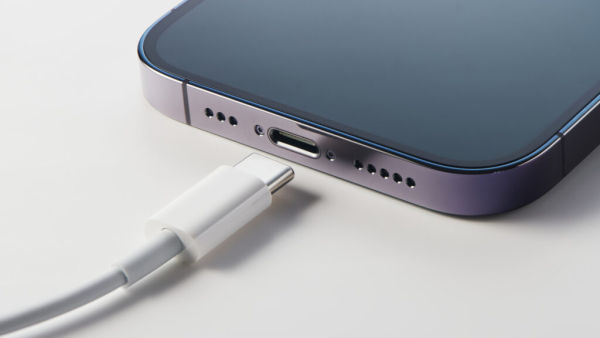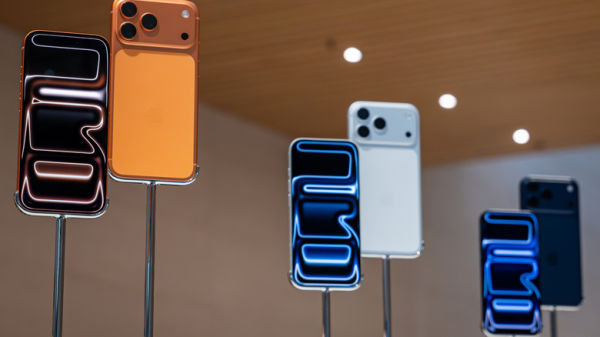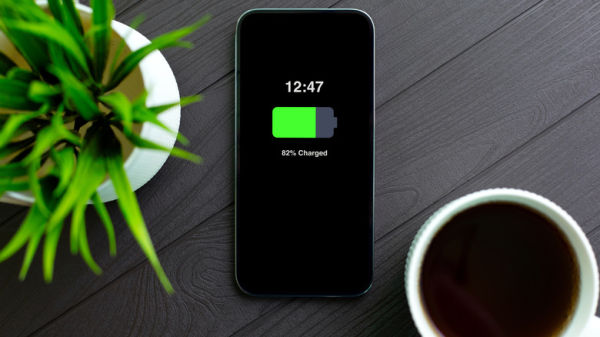USB has been around for a long time, evolving from generation to generation. Nowadays, the most common type is USB-C, but for years, Apple was adamant on using its own Lightning port on its smartphones. That changed two years ago, and now Apple’s latest iPhone 17 and iPhone 17 Air models have USB-C ports; however, both are still limited to USB 2.0 transfer speeds.
That caps performance at 480Mbps, the same rate users have seen since the Lightning era and the same limitation that started when Apple first introduced USB-C with the iPhone 15. This means the port is fine for charging and basic syncing, but it’s nowhere near what modern smartphones or Apple’s own computers and tablets can handle. Apple hasn’t included a faster cable in the box either. The bundled woven USB-C cable is durable, but it only supports USB 2.0 speeds.
Wireless connections like AirDrop still help bridge the gap, but for professionals or power users who want to work with wired accessories, the lack of USB 3.0 support feels limiting. External displays, wired keyboards, microphones, and even Ethernet adapters work without issue thanks to USB-C’s flexibility, but transfers remain slow. Apple is clearly drawing a line between its standard and Pro iPhones. If you care about file speeds, the base iPhone 17 simply won’t get you there. It’s clear Apple expects those users to spend more on the Pro models.
Pro models unlock USB 3.0 performance
Apple reserved faster USB ports for the iPhone 17 Pro and iPhone 17 Pro Max. These models support USB 3.0 with transfer rates up to 10Gbps, as long as you use the correct cable. That speed bump is a massive improvement over the 480Mbps cap on the regular iPhone 17. However, Apple’s default in-box cable still only supports USB 2.0 speeds, so you’ll need to purchase a separate USB 3.0 cable to unlock the maximum transfer rate. This may frustrate some buyers, but it’s consistent with Apple’s approach over the past few years.
For creators, the difference is significant. The Pro models allow ProRes 4K video recording at up to 120 fps, and those huge files can be written directly to external USB 3.0 storage. That’s only possible with the faster port and a proper cable. Connecting external SSDs also enables much longer recording sessions, since ProRes video files consume gigabytes per minute. A 1TB portable drive connected to a Pro iPhone can handle extended shoots, something you simply can’t do on the base iPhone 17. The same USB 3.0 speed benefits apply to transferring files to a computer, making backups much quicker.
Beyond storage, the Pro models take advantage of USB-C’s versatility in other ways. External displays can be connected using USB-C to HDMI adapters, letting you mirror or extend your iPhone screen on a 4K monitor. Professional workflows like mobile podcasting or tethered photography also benefit from the higher-speed connection.
What it means for everyday use
For most people, the speed of the USB port on the iPhone 17 will matter less than the charging performance that comes with it. All iPhone 17 models support faster charging through USB-C. The iPhone 17, 17 Pro, and 17 Pro Max can all hit 50% in about 20 minutes when paired with a 40W or higher adapter, compared to the 30 minutes it took for the iPhone 16 series. Apple’s new 40W Dynamic Power Adapter with 60W Max is designed for this, but any USB-C PD charger with at least 40W output works.
MacBook Pro adapters ranging from 67W to 140W also deliver full-speed charging. The iPhone Air remains capped at 20W wired charging, although it supports the same USB-C port and wireless Qi 2.2 charging, which also reaches 20W. MagSafe charging has also been improved. The iPhone 17 can hit a 29W peak on Apple’s latest MagSafe Charger, with sustained speeds holding around 25W.
The split between USB 2.0 and USB 3.0 ultimately comes down to whether you require fast data transfers. If you’re mainly charging or plugging in the occasional accessory, the standard iPhone 17 will be fine. However, if you frequently work with large files, connect to external storage, or rely on your phone for professional video, the Pro models are the only viable choice. Charging may finally be fast across the board, but data speeds remain a clear dividing line.







